I dati, pubblicati sulla rivista Nature da un gruppo di ricercatori guidati dall'Università tecnologica di Swinburne, in Australia, indicano che la quantità di massa rilevata è circa 100 volte maggiore di quella che ci si aspettava
Sei galassie che si trovano nell'univero primordiale, quando aveva solo 500-700 milioni di anni, sono state osservate grazie al James Webb Space Telescope (Jwst) e sembrano essere molto più massicce rispetto a quanto precedentemente ipotizzato. A rivelarlo uno studio, pubblicato sulla rivista Nature, condotto dagli scienziati dell'Università del Colorado a Boulder e della Swinburne University of Technology di Victoria, in Australia.
Messe in discussione le teorie sull'origine dell'universo
La scoperta sta portando scompiglio tra i ricercatori, mettendo in crisi le teorie attuali sulla formazione delle sei galassie e sull'origine dell'universo. I dati pubblicati su Nature, infatti, indicano che la quantità di massa rilevata è circa 100 volte maggiore di quella che ci si aspettava. Quando l'universo si espande, le galassie e altri oggetti celesti si allontanano ulteriormente tra di loro, alterando la luce che emettono. Grazie a questo principio, i ricercatori hanno cercato galassie massicce formatesi nell'universo primordiale, antecedentemente a 750 milioni di anni dal Big Bang. Gli esperti hanno individuato sei oggetti cosmici sorprendentemente massicci, tanto da non dover essere reali secondo i dati dell'attuale teoria cosmologica.
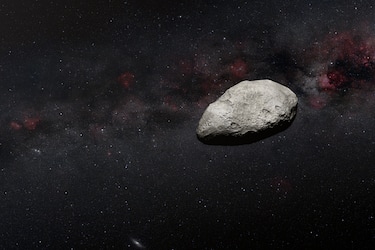
leggi anche
Nasa, il telescopio Webb rivela un asteroide grande come il Colosseo
Il ricercatore Leja: "Potrebbero essere buchi neri supermassicci oscurati"
"Nell'universo così giovane pensavamo di trovare solo minuscole baby-galassie, mentre quelle individuate sono già mature quanto la nostra Via Lattea", ha spiegato Joel Leja dell'Università statale della Pennsylvania e co-autore dello studio. Il ricercatore ha sottolinetoa che in questa fase è importante mantenere una mente aperta: "I dati indicano che probabilmente si tratta di galassie ma penso che ci sia una reale possibilità che alcuni di questi oggetti si rivelino essere buchi neri supermassicci oscurati".
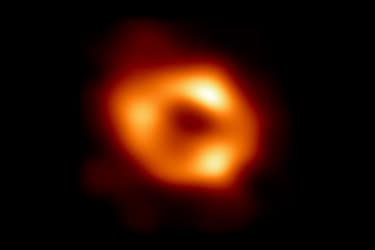
approfondimento
Spazio, scoperto buco nero dormiente in fuga dalla sua galassia
Necessari nuovi studi per confermare la scoperta
Secondo gli autori dello studio, per confermare la scoperta saranno necessarie osservazioni che misurino, oltre allo spettro visibile (che comprende l'infrarosso sfruttato dal telescopio Webb), anche le onde radio ed i raggi X emesse dagli oggetti: queste immagini, infatti, permetterebbero di fornire dati più accurati sulle reali distanze alle quali si trovano le galassie e sugli elementi che le compongono. "Questo ci direbbe immediatamente se questi oggetti sono reali - ha aggiunto Leja - e quanto sono grandi".
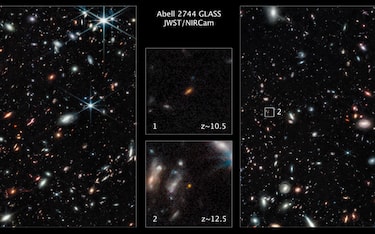
approfondimento
Il telescopio James Webb vede due galassie all'alba del cosmo. FOTO
"L'universo primordiale potrebbe essere molto più complesso di quanto pensavamo"
"Questi elementi hanno circa 13 miliardi di anni", ha osservato Erica Nelson, a capo del team ha esaminato i dati raccolti dal potente telescopio spaziale identificando le masse stellari. "Non ci aspettavamo - ha aggiunto - che l'universo primordiale si organizzasse in così relativamente poco tempo. Questo lavoro rappresenta solo una piccola parte del potenziale del James Webb nell'aiutarci a ripensare l'astronomia". Nei prossimi step, hanno spiegato gli autori della, sarà necessario convalidare i risultati di questo lavoro su questi oggetti misteriosi. "L'universo primordiale - ha speigto Nelson - potrebbe essere molto più complesso ed eccitante rispetto a quanto ipotizzato. In ogni caso, non ci aspettavamo la presenza di galassie così antiche nel tempo".
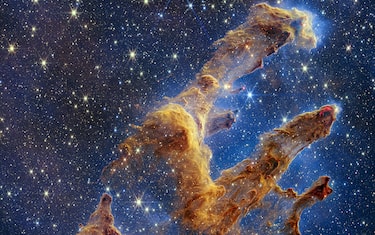
approfondimento
Pilastri della creazione, telescopio Webb cattura nuova immagine. FOTO
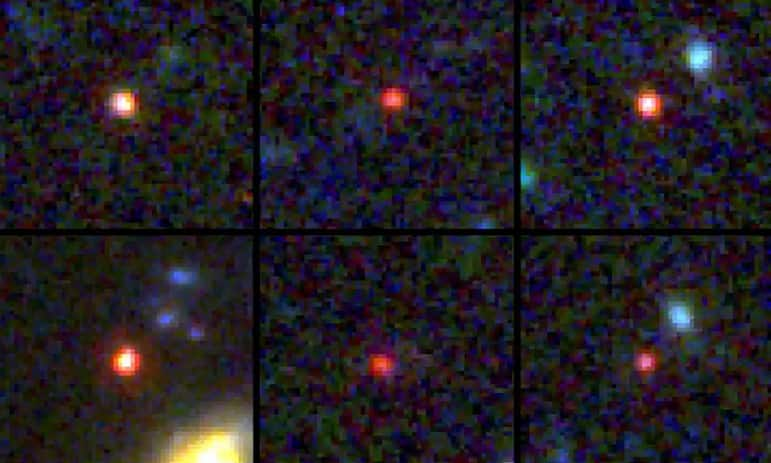

)
)
)
)
)